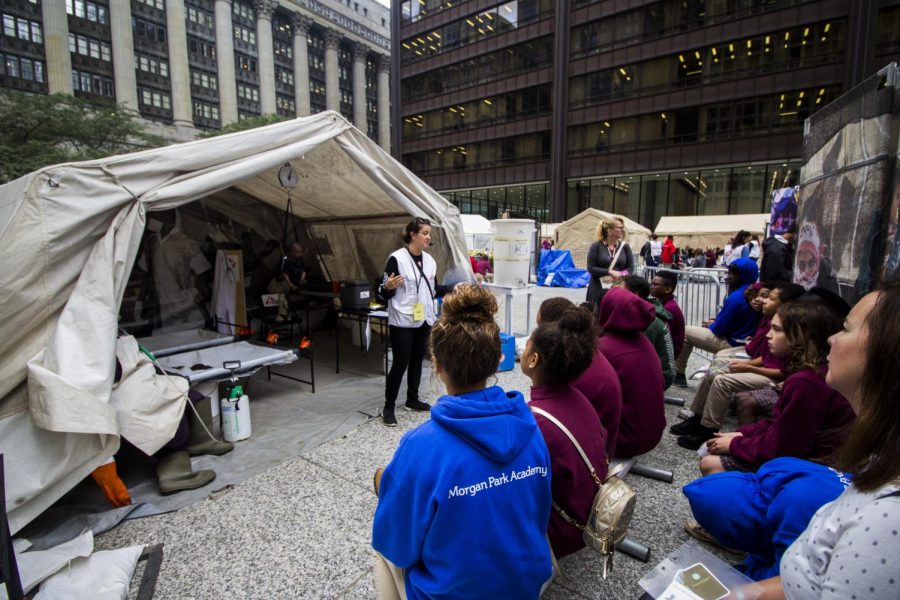‘Forced From Home’ exhibit highlights refugee experience
October 5, 2018
Members of Doctors Without Borders hosted an exhibit at the Richard J. Daley Center to show the growing struggles of displaced people by allowing them to experience the journey through virtual reality and interactive stations.
“We wanted to humanize the narrative and raise awareness about the 68.5 million people that are displaced across the globe,” said Erin Ching, external relations manager and field logistician for Doctors Without Borders. “Last year we went to the West Coast. This year we are focusing on the Mid-Central Region.”
The exhibition, “Forced From Home,” highlighted the ongoing crisis of refugees from various countries and taught Chicagoans how to help. The exhibit, located at 50 W. Washington St., ran from Sept. 23-30. By demonstrating push factors—a term used to describe why people migrate to different areas—the dangers of travel, healthcare and legal status of displaced peoples, this interactive and visual tour brings insight to the struggle many face on a daily basis.
Doctors Without Borders is an international humanitarian medical organization founded in Nigeria in 1971. The group’s beginnings consisted of joint efforts from medical personnel and journalists to raise awareness about displaced peoples. Treating people regardless of race, religion and nationality, the organization acts out of their founding principles of neutrality and impartiality, Ching said.
The exhibition featured an hour-long tour, during which groups were guided by field-experienced aid workers from Doctors Without Borders through nine different stations that helped tell the narrative of people who become displaced. The tour started with a 360-degree video in a geodesic dome showing life in various refugee camps throughout the world.
“Just to start with the 360-degree video, to look around [and] see the entire refugee camp was pretty impactful because you usually just see one small clip of it,” said Kelly Albrecht, a West Loop resident. “To be surrounded by it was something that drew my attention.”
“Forced From Home” concluded with an opportunity for participants to use a virtual reality headset that plays one of several different stories that follow the journeys of displaced people leaving their homes.
Along with visual elements, participants received a mock identification of a displaced person and had a short time to gather cards representing items they would take with them in the event of an emergency. Participants must sacrifice an item in order to move on to the next location.
Participants were also able to see and sit in a small motorized raft typically used as transportation to other countries by refugees, as well as displays of shelters in various countries.
”It was really interesting to see how dangerous the journey could be on the boat, but also the actual tents, the multi-family ones especially,” said Ryan Veseling, a Des Plaines firefighter and paramedic. “You don’t consider cultural differences and how two families living together could be dangerous.”
Donna Canali, a nurse and 13-year veteran of Doctors Without Borders, said ordinary people can improve the current situation by simply being welcoming to refugees.
“People’s journeys [do not] end just because they have reached this location,” she said. “It’s a big adjustment. We can’t all go overseas and do work, but at home, we can all make a difference.”
While exiting the exhibit, Chicagoans were made aware of local groups and organizations that specialize in helping refugees and how they can help at the “Take Action” tent.
“Across the globe, various countries have signed international obligations, international humanitarian law, and it is important that these countries uphold their standards,” Ching Said. “Seeking safety is not a crime.”








